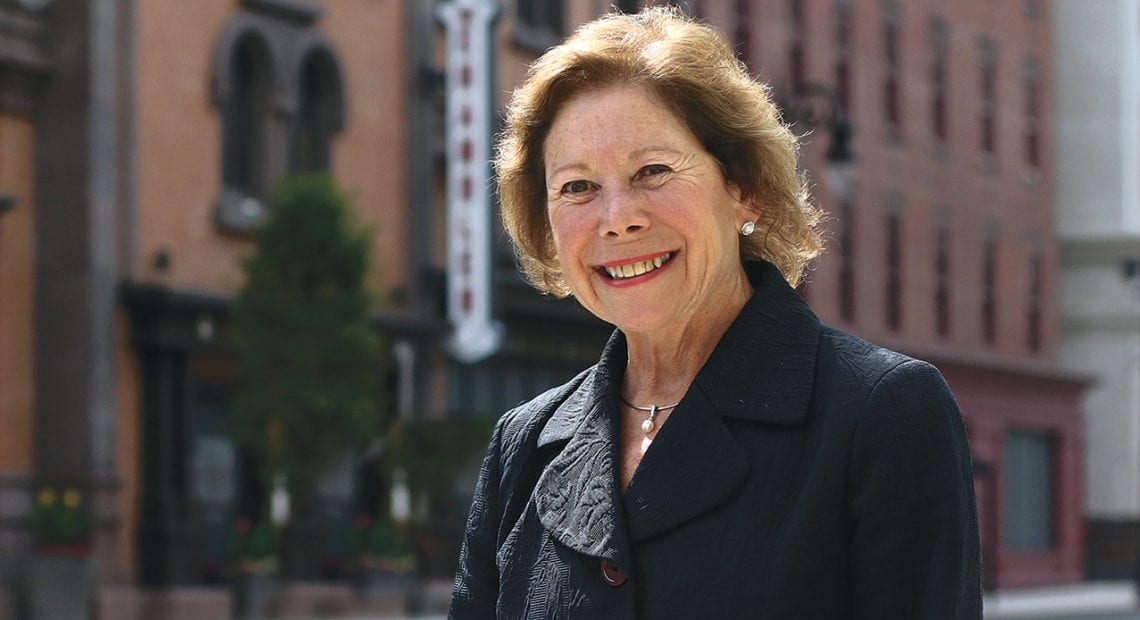
Nonprofits Face a Host of Daunting Challenges
A Strained Safety Net
Managing a nonprofit agency has never been easy, but a number of factors, from low unemployment rates and rising employment costs to new labor regulations and immense competition for donor dollars, are making it much more difficult for organizations to carry out their missions.
Joan Kagan compares the effects that unfunded mandates and rising costs have on a nonprofit to a bad tomato season. Well, sort of.
To make that point, she told a story. On a summer day a few years ago, she was informed by the waitress at the restaurant she was patronizing that, if she wanted tomatoes on her sandwich, she would have to pay a surcharge.
“There was a lack of good tomatoes around, so that restaurant owner had to pay a higher price for his tomatoes, and he was passing that cost onto the customer,” said Kagan, president and CEO of early-education provider Square One, adding quickly that the analogy doesn’t exactly work.
That’s because nonprofits are not like restaurants offering tomatoes. They provide vital services, the rates for which are set by the state or federal government, and they can’t simply be raised because the cost of paying employees, providing health insurance, or simply paying the rent, continues to escalate.
And this is the situation that nonprofits, a large and important cog in the regional economy, are facing right now.
Indeed, in June 2018, Massachusetts Gov. Charlie Baker signed a bill that is set to increase the minimum wage gradually every year, until it reaches $15 an hour in 2023. In addition, a payroll tax increase was issued for the new paid family and medical leave program, upping the rate from 0.63% to 0.75%. The state originally planned to begin collecting these taxes on July 1, but due to many companies and organizations expressing confusion on the specifics, the start of the required contributions has been delayed by three months.
“If there is a 5% increase in our health insurance in a year, we have to figure out where that comes from. We can’t just turn around and raise our rates by 5%.”
But the tax hike is coming, and it is one of myriad factors contributing to what are becoming ultra-challenging times for nonprofits, said Kagan.
Katherine Wilson, president and CEO of Behavioral Health Network Inc., which provides a variety of services to individuals with mental health issues, concurred.
“What’s more challenging now for my type of business is that so much of our revenue is established as a rate by somebody else,” said Wilson, who speaks from decades of experience when she says that while running a nonprofit has never been easy, it has perhaps never been more difficult than it is now. “If there is a 5% increase in our health insurance in a year, we have to figure out where that comes from. We can’t just turn around and raise our rates by 5%.”
Gina Kos, executive director of Sunshine Village in Chicopee, a provider of day services for adults with disabilities, agreed. She told BusinessWest that while demand for the services provided by her agency is increasing, a point she would stress many times, the funding awarded to it for those services has either remained stagnant or decreased, at the same as costs, especially labor costs, are skyrocketing.
And, as noted, matters are about to get a whole lot worse.
“The state tells us how much they’re going to give us for a service, and we figure out how we can create a high-quality, desirable service with the money that they’re giving us,” said Kos, adding that Sunshine Village, along with many other nonprofit organizations, have been able to do this successfully in the past. “Unfortunately, now, it’s getting harder and harder… the regulations are becoming too burdensome.”

Gina Kos says the measures contained in the so-called ‘grand bargain’ will present a stern test for all nonprofits.
She was referring, of course, to measures contained in the so-called Grand Bargain, the compromise struck between elected officials and the state’s business leaders. They include the minimum-wage increases and paid family leave, the latter of which will bring its own challenges to nonprofits used to running lean.
And these additional expenses come at a time when nonprofits are locked into rates that they can charge for services, with some of these rates badly out of date, said Wilson.
“When the state looks at an organization to come up with its rate, they look at the cost it took to fulfill the service two years ago,” she explained. “They don’t look at the market rate, they look at data that’s two years old … so the rates that they establish are extremely low and keep us as employers of individuals with low hourly rates.
“That makes it very difficult to find a quality staff person to fill our jobs and do good work that we need to be doing for the people that we serve,” she went on, adding that, in this climate, she and all nonprofit managers must be imaginative and persistent as they seek ways to bring more revenue and donations to their organizations.
For this issue and its focus on nonprofits, BusinessWest talked with area industry leaders about the forces contributing to these challenging times and the ways they’re responding to them.
Making Ends Meet
Kos, like other business and nonprofit leaders, said she has real doubts about whether the pending minimum-wage increases will significantly improve quality of life for the employees who receive them.
She believes many businesses and nonprofits will respond to the increases by cutting staffers’ hours, thus keeping payroll levels stagnant. Meanwhile, the minimum-wage hikes may actually hurt some employees because their higher annual salaries will push them over the so-called benefit cliff, meaning they will lose forms of assistance — for housing, food, and other items — previously provided by state and federal agencies because they no longer qualify, income-wise.
“Unfortunately, now, it’s getting harder and harder… the regulations are becoming too burdensome.”
“The goodness of what people want to do to give people a better quality of life through income is not going to be achieved,” said Kos. “And, quite honestly, it might even be reversed.”
Meanwhile, she doesn’t have any doubts that these measures will make it much more difficult for agencies like Sunshine Village, where 75% of the budget goes to wages, to carry out their missions, because they will make it more difficult to properly fund and staff their programs and also attract and retain talent.
Indeed, Kos said Sunshine Village, which has 280 employees, likes to tout itself as an employer of choice, paying employees $2 to $4 over the minimum wage in the past, a practice it will find considerably more challenging in the years to come.
That’s due in part to the compression effect that minimum-wage hikes have on salaries across the board. If an employer raises wages at entry-level positions from $13 to $15, it needs to then move its second-tier employees higher in order to differentiate the positions, and so on, up the ladder.
In short, minimum-wage hikes impact wages throughout an organization, said those we spoke with — and, again, unlike businesses selling sandwiches with tomatoes on them, they can’t simply raise rates to cover them.

Katherine Wilson says nonprofits are being challenged by set rates for services that are often out of step with the cost of providing those services.
Meanwhile, the paid-family-leave measure brings challenges of its own, said Kos. In addition to the tax burden, agencies must be able to provide services and run the organization if people are on leave, a real burden for smaller agencies, especially with programs that require minimum staffing ratios.
“We’ve always been able to find ways that we can do more with less,” said Kos. “And we’ve done that through innovation, through increasing efficiencies, through cost-cutting initiatives, but today, it’s just getting harder.”
Kagan agreed, and noted that, with historically low unemployment rates nationally and even in this region, simply finding staff is difficult, especially when nonprofits are competing with a host of industry sectors, including retail and hospitality, for individuals earning entry-level wages.
Kos concurred, and said payroll is just one of the line items on the budget where the numbers are growing.
“Other costs are rising at a level that our funding levels are not keeping up with,” she said. “And because of that, we’re losing really good staff.”
Mission Control
These new challenges for nonprofits are compounded by growing need within the community for many of the services they provide and demand for greater services, said those we spoke with, making this an even more difficult time for this sector.
“Not only are we dealing with the same type of funding level as we have had five or 10 years ago,” said Kos, “the expectation for the service from the customers that we’re seeing is that they want a better service, and we’re not getting better funding for that service.”
She noted that her agency, like Square One and BHN, is one of the many organizations in what’s known as the ‘safety net’ for Western Mass., and if they are not getting the necessary funding to provide their services to members of the community, the entire business community will be negatively affected.
“If Sunshine Village can’t serve more people coming out of the school system, if Square One isn’t able to serve more kids who need daycare, if Behavioral Health Network isn’t able to provide services for people with substance-abuse issues, their family members aren’t going to be able to go to work, and the business community is going to be hurt,” said Kos. “If their employees don’t have the safety net, their employees aren’t going to be able to go to work.”
In response to these many challenges, nonprofit managers are forced to be more creative with ways to raise additional revenues and become leaner, more efficient organizations, both of which are necessary if they are to continue to carry out their respective missions.
“The vast majority of folks, certainly in the business community, don’t understand that we’re businesses too.”
But most don’t have much flexibility when it comes to their budgets. At BHN, for example, 80% to 83% of the organization’s revenue is related to compensation.
“That doesn’t leave a lot of room to find money when there is something that represents an increase in the cost of paying our employees or supporting them,” Wilson told BusinessWest, adding, as others did, that agencies must think outside the box when it comes to bringing in more revenue in order to keep up with rising regulation costs.
This includes advocating with state representatives, looking for grants, and cutting costs within the organization.
This isn’t easy, said Kagan, adding that another challenge facing nonprofits is that people don’t understand that the same problems facing businesses today — finding and retaining talent, paying for ever-rising health insurance, coping with new state labor and employment laws, and many others — apply to them as well.
“The vast majority of folks, certainly in the business community, don’t understand that we’re businesses too,” said Kagan, adding that this makes it more difficult to generate more donations or other forms of support.
Kos agreed, but noted that, as businesses struggle with the same cost issues, there might be growing awareness of what nonprofits are confronting.
“I think what’s interesting today is that the for-profit business community is starting to struggle with the same things that we as the nonprofit community have been struggling with for decades,” she said.
Kagan agreed, and noted that it’s important for nonprofits to educate the business community — and all their supporters — about just how challenging the current climate is, and will be for years to come.
“You’re not advocating just to bring money into your own organization,” she explained. “You need it so that you can pay fair equitable salaries to your staff and provide a high-quality service to the people that you’re serving.”
Climate Change
All those we spoke with stressed that managing a nonprofit has never been as easy as it might look.
But over the years, said Kos, organizations like Sunshine Village have “managed.”
Indeed, they’ve managed to continuously raise funds vital to their organizations, cope with rising costs and changes in labor and employment laws, and, yes, carry out their important missions.
But it’s a fact that simply ‘managing’ is becoming ever-more difficult.
These new regulations are making it increasingly difficult for nonprofits to keep their heads above water, but that doesn’t stop them from trying.
Kayla Ebner can be reached at [email protected]






